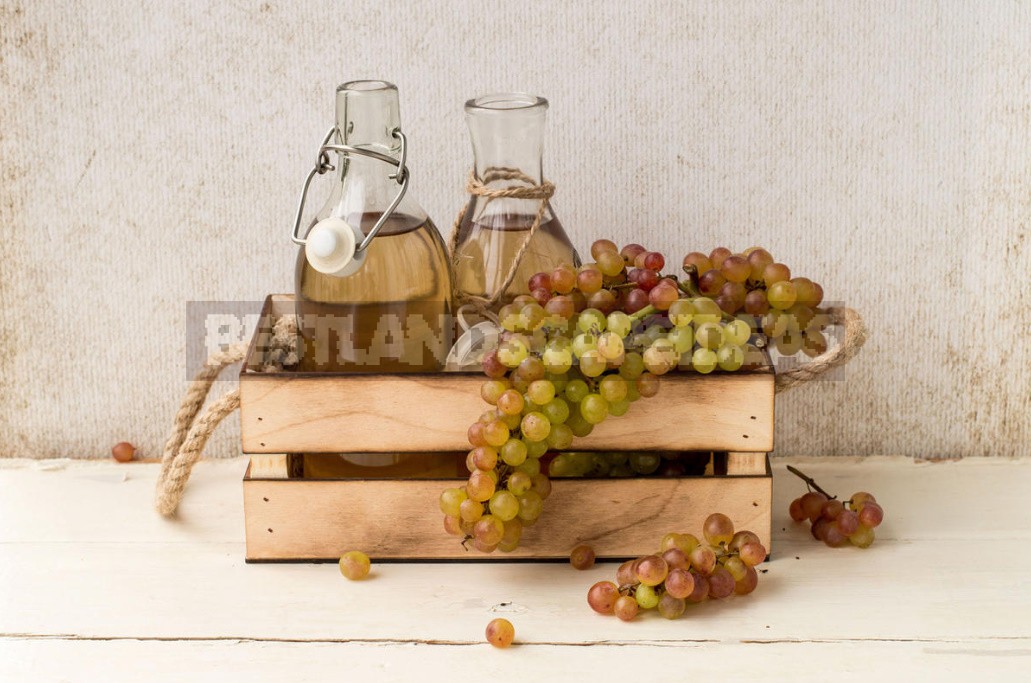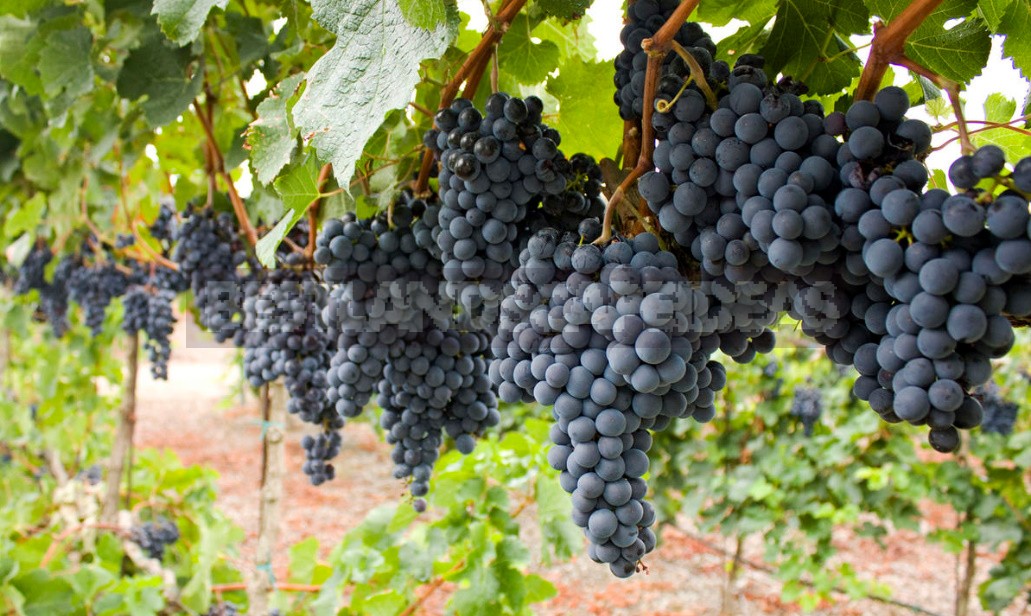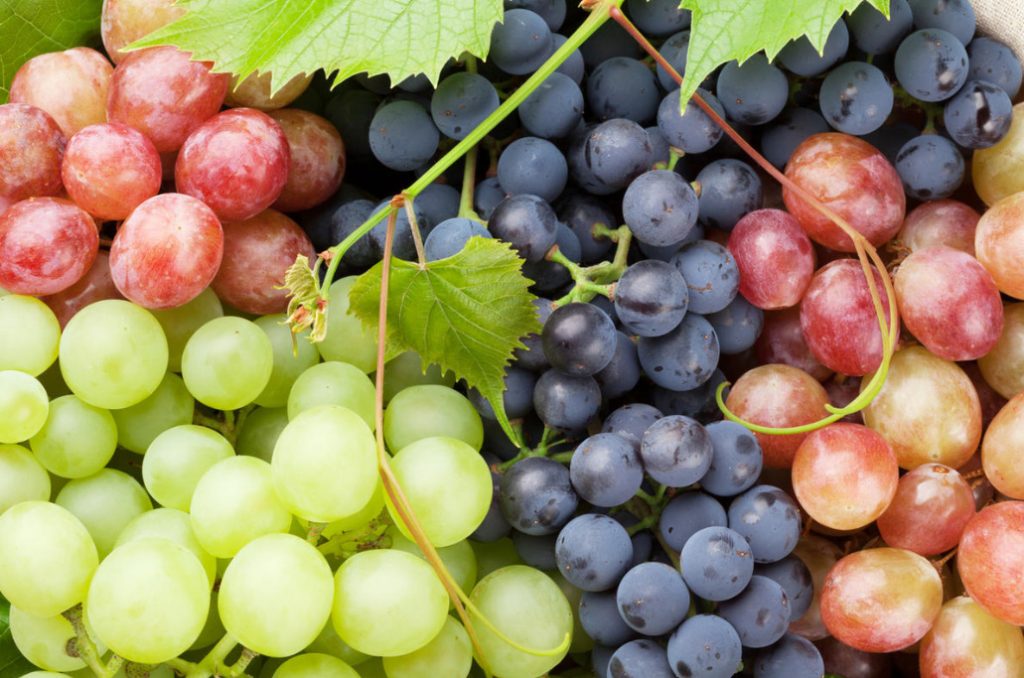Not so long ago, I heard a beautiful legend about the origin of grapes… the Vine was presented to people as a gift by the gods of Olympus. The vine quickly began to grow, and soon clusters of unusual juicy berries appeared on it. The ones that were ripe at dawn were tinged with the soft pink of the dawn. Clusters of berries, ripe in the hot afternoon, glowed from within with the amber-yellow glow of the sultry midday sun. And those brushes that reached full ripeness after sunset, absorbed all the colors of the evening dawn, the gathering twilight and the velvet black sky…
If you had to choose the degree of usefulness of grapes of different colors, which color would you give the palm: dark blue, light, pink, red or green? It turns out that not everything is so simple…
The benefit depends on the content of biologically active substances, and there are more than 150 of them in grapes. At the same time, not only berries have useful properties, but also the vine itself. However, everything in order…
Grape berries — a storehouse of health
Refreshing pulp of grapes contains easily digestible carbohydrates, anthocyanins, catechins, vitamins B1, B2, B6, B12, C, P, PP, A, E, C, K, folates, trace elements such as calcium, magnesium, zinc, potassium, phosphorus, selenium, iron, aluminum, and many others. In addition, berries contain essential amino acids, fruit acids – malic, citric, formic, tartaric, as well as a variety of enzymes, antioxidants, flavonoids and polyphenolic compounds.

The science of grape varieties — ampelography-was named by its founder Philip Sachs in 1661, and the treatment of grapes, grape juice and wine is known as ampelotherapy. It is especially widespread in the treatment of various diseases with a chronic course.
What is rich in the skin of grapes
The skin of the berries is covered with wax, it contains essential oils, phytosterols, and coloring agents. The waxy substance protects the berries from the adverse effects of climate, excessive evaporation of moisture, and diseases. The thicker the skin, the more tannin it contains. And the color saturation indicates the percentage of anthocyanins.

Essential oils give a special taste and aroma to various grape varieties. They easily pass from the skin to the wort in the production of wines and cognacs. The richer the composition of essential oils in the variety used, the brighter and richer the flavor bouquet evaluated during tasting. Their total content is small, but the individual components have their own aromatic characteristics.
Tasters highlight the smells of lemon, cloves, violets, lilacs. Essential oils of the ‘Isabella’ grape variety have a strawberry flavor. Wine from the ‘Traminer’ variety smells like a rose. The variety ‘Sauvignon blanc’ gives a very strong floral smell, and some flavors are even difficult to define unambiguously — so rich and diverse is the composition of essential oils in the skin of grapes that were collected in different places of growth.
Phytosterols, or sterols, contained in the skin of berries – are substances of plant origin that bind lipids in the human body and reduce the level of free cholesterol. The most famous of them is β-Sitosterin. The beneficial properties of sterols are to significantly reduce the risk of atherosclerosis, since they delay the absorption of cholesterol in the intestine.
Grapes with dark berry color
The first place in terms of the content of useful substances rightfully belongs to grape varieties with dark blue or blue-black color of berries.

The pigment that gives this color is called resveratrol, and the more of it, the blacker the color of the berries, and therefore the more useful the grapes. This active substance is a powerful antioxidant that prevents oxidative reactions and the associated processes of cell aging. The highest content of resveratrol is found in the skin and bones of grapes, so to achieve the maximum therapeutic effect, it is recommended to eat the berries whole, carefully chewing.
Resveratrol activates the gray matter cells of the brain and, when used regularly, improves memory and social adaptation of older people. Because of this, it can be used for stress and depression, senile dementia, Alzheimer’s disease, and simply to prevent memory impairment.
Dark berries contain a lot of manganese, iron, and iodine. This gives grounds to recommend grapes for anemia — to increase hemoglobin in the blood; for diseases of the thyroid gland — in cases of insufficient intake of iodine from food.

A very important role is played by the boron contained in dark blue grapes. It is boron that controls the sufficient production of female sex hormones-estrogens, which contribute to the deposition of calcium in the bones and strengthen bone tissue. Elderly women are more likely to suffer from a serious complication of osteoporosis — a hip fracture — so you can enjoy eating ripe sun berries to prevent osteoporosis.
And Sunny loves grapes very much! Thanks to solar energy, glucose accumulates in berries during photosynthesis. No wonder vineyards are planted in open Sunny places.
Dark grapes must be included in the diet of women also because due to the high content of resveratrol, you can prevent the risk of cancer of the female genital area, varicose veins, and preserve the freshness and beauty of the skin, hair and nails.

It is proved that grape juice taken on an empty stomach reduces migraine pain, which affects mainly the female half of humanity. Another argument in favor of dark grapes for women’s health: it regulates the gastrointestinal tract, cleanses the intestines, refreshes the breath and slows down the aging process.
Grapes also prevent vision loss. Not everyone knows that there are pathological conditions that develop due to dystrophic processes in the retina of the eye. If you eat a bunch of grapes in the morning, at lunch and in the evening, you can reduce the risk of blindness by almost 40%.
Carotenoids, lutein and zeaxanthin, contained in grapes, protect the retina from harmful ultraviolet radiation, improve visual acuity at dusk. It is believed that the antioxidant resveratrol also effectively fights age-related eye diseases, in particular, cataracts.
















